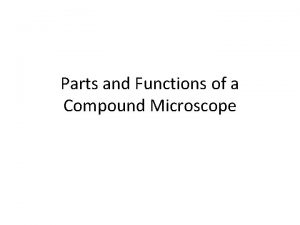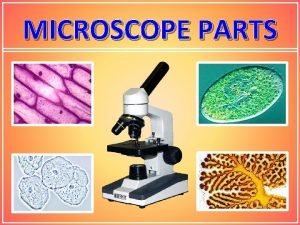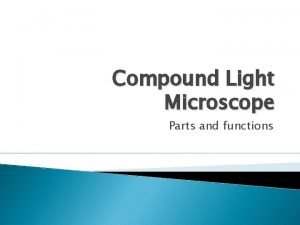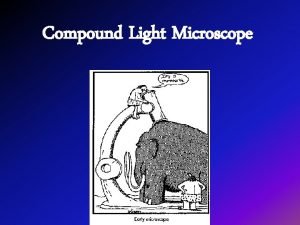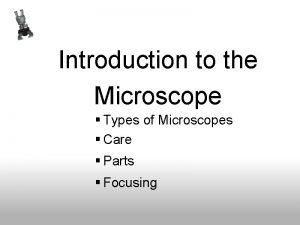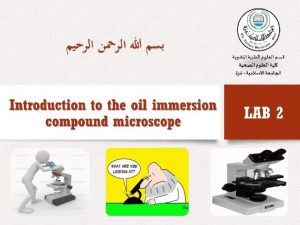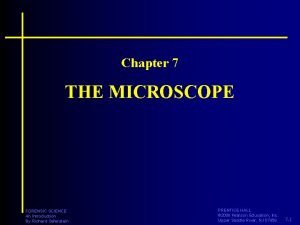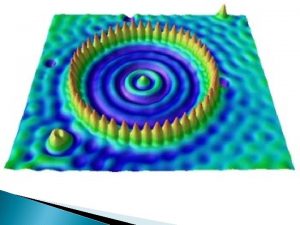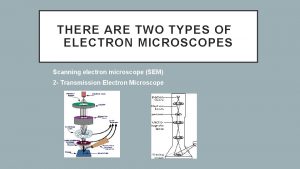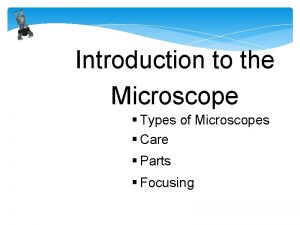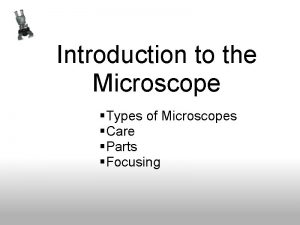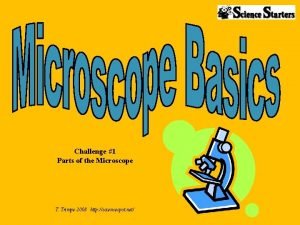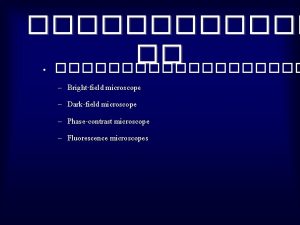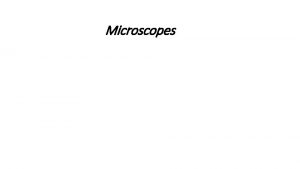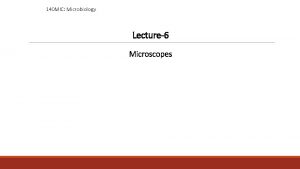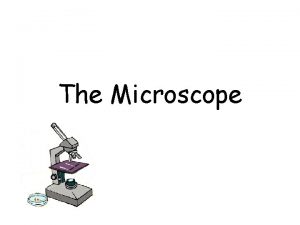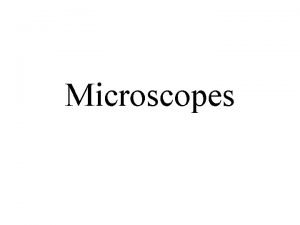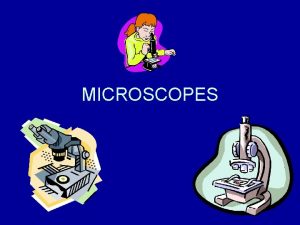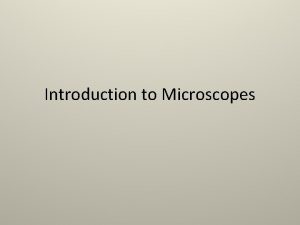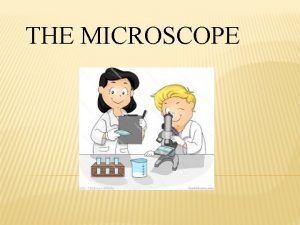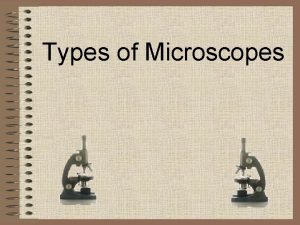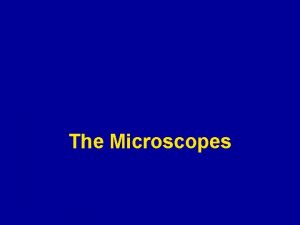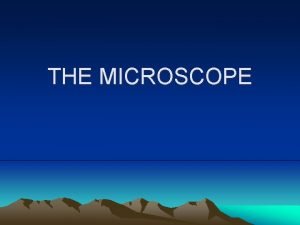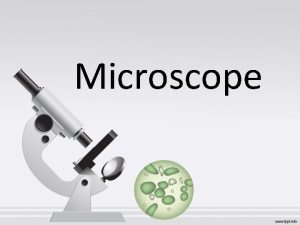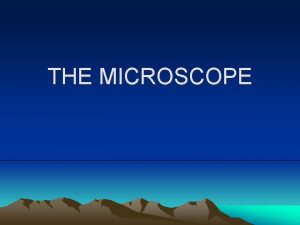Microscopes History Parts Functions Early Microscope History of



















- Slides: 19

Microscopes History, Parts, & Functions

Early Microscope

History of the Microscope • During the 1 st century AD (year 100), glass had been invented and the Romans were looking through the glass and testing it. – They experimented with different shapes of clear glass and one of their samples was thick in the middle and thin on the edges. – They discovered that if you held one of these “lenses” over an object, the object would look larger.

History of the Microscope • These early lenses were called magnifiers or burning glasses. • The word lens by the way, is derived from the Latin word lentil, as they were named because they resembled the shape of a lentil bean

History of the Microscope • These magnifiers became popular in the 13 th century when spectacle makers were producing lenses to be worn as glasses. • In 1590, two Dutch spectacle makers started experimenting with these lenses. – Zaccharias Janssen and his father Hans • Experiments led by these men and other scientists led to the discovery of the compound microscope

History of the Microscope • Many great people experimented with lenses, such as Galileo. But one man became the “father of microscopy” – his name is Anthony Leeuwenhoek (1632 -1723) – He saw bacteria, yeast, blood cells and many tiny animals swimming about in a drop of water. – Compound microscopes had been invented in the 1590 s, nearly forty years before Leeuwenhoek was born, however there were technical difficulties in building them.


The Modern Compound Microscope • A compound light microscope is a microscope with more than one lens and its own light source. – is an instrument commonly used inside the laboratory to view specimens mounted on a glass slide – The compound microscope magnifies the object in the slide in such a way that the smallest structures become visible and clear. – allowing structures in the slide to be magnified for up to 2, 000 times their actual size.

Magnification • If the magnification of a lens is 2 X then it roughly doubles the size of the image of the object.

Parts of the Microscope • Eyepiece: the lens at the top that you look through. • Body Tube: Connects the eyepiece to the objective lenses

Parts of the Microscope • Stage Clips: clips that hold your slide in place • Objectives: Usually you will find 3 or 4 objective lenses on a microscope. They almost always consist of 4 X, 10 X, 40 X and 100 X powers.

Parts of the Microscope • Coarse Adjustment Knob: Moves the stage up and down for FOCUSING • Fine Adjustment Knob: Moves the stage slightly to SHARPEN the image


Parts of the Microscope • Light: A steady light source to help illuminate the slides • Stage: The flat platform where you place your slides.

Parts of the Microscope • Nosepiece: This is the part that holds two or more objective lenses and can be rotated to easily change power.

Parts of the Microscope Arm • Arm: used to support the microscope when carried • Base: bottom of the microscope. Supports it. Base



• Let’s see the world of microscopes!
 Parts of microscope and their functions
Parts of microscope and their functions Microscope mechanical parts
Microscope mechanical parts Compound light microscope parts
Compound light microscope parts Body tube microscope function
Body tube microscope function 1590 microscope
1590 microscope Compound light microscope parts and functions
Compound light microscope parts and functions Light microscope part
Light microscope part Three types of microscope
Three types of microscope T.trimpe 2003 http //sciencespot.net/ answers
T.trimpe 2003 http //sciencespot.net/ answers The purpose of it
The purpose of it Forensic science microscopes
Forensic science microscopes Which organelle breaks down organelles that are no
Which organelle breaks down organelles that are no Uses of a compound microscope
Uses of a compound microscope Electron microscopes main idea
Electron microscopes main idea Types of electron microscope
Types of electron microscope Types of microscopes
Types of microscopes Types of microscope
Types of microscope Difference between light microscope and electron microscope
Difference between light microscope and electron microscope Microscope mania compound light microscope
Microscope mania compound light microscope Early cpr and early defibrillation can: *
Early cpr and early defibrillation can: *

